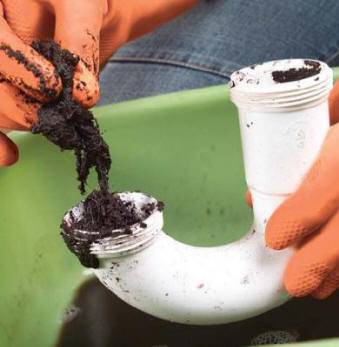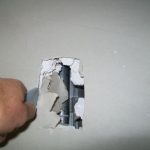One does not have to be an experienced plumber to know how to repair a clogged drain. The means one would need are close at hand, and the methods involved are quite easy to follow.
One measure that can be taken in how to repair a clogged drain is to remove any obstruction from the drain, clearing away any trace of debris. The problem may come from particles that have collected in the strainer, in which case it has to be removed in order to be cleaned. There are certain sinks into which one can merely reach down to twist off or pull out the strainer, and there are others which would require one to squat down in order to locate the pivot rod which has to be removed to lift out the strainer.
If the drain remains clogged even after the strainer has been cleaned, then the clog could be in the pipe. If the drain under scrutiny is in the kitchen sink, it would most likely be blocked by food particles. If the drain is in the bathroom sink, then the probable cause of stoppage would be an accumulation of hair and soap scum.
The tool that one would need to unclog a drain pipe is a drain auger, or as it is also commonly referred to, a “snake.” The stopper or strainer must first be removed from the drain before slipping the snake into the opening. The auger’s handle is cranked as the auger wire is pushed further into the drain pipe. Once the wire discovers the clog, the wire is then moved back and forth as the handle is being turned. The snake is then slowly pulled out the drain while simultaneously turning the handle.
While there are commercial drain cleaners that are available, many of them are made from harsh chemicals that could be damaging to drain pipes, not to mention potentially hazardous to the environment and perhaps to one’s health should they happen to get some of it on their eyes or skin. Fortunately, there are natural drain cleaners in the market, so one should try those first before going with a chemical brand.
Better yet, one can make a homemade drain cleaner of their own out of baking soda and vinegar. A small quantity of baking soda is first poured down into the drain, followed by a similar measure of vinegar. One should expect some emission of fumes and foam, but these are non-toxic and will not pose any health hazards. The unclogging process should take a period of approximately 3 hours. If the drain is still congested afterwards, just repeat the procedure. Another recommended method of how to repair a clogged drain is to flush it a couple of times using boiling water.
If the drain is clogged by too much water, then one would merely have to resort to that traditional unclogging implement, the plunger. Water is added into the drain, but not too much to fill the entire sink, just enough to cover the head of the plunger if needed. The plunger head is placed over the clogged drain, covering its opening. Should the sink have an overflow drain, it has to be covered with a towel in order to keep the water from spilling out from it. The plunger is pushed up and pulled down in quick motions in order for the drain to be unclogged.
When all else fails, it may be time to call a professional. Otherwise, when one knows how to repair a clogged drain by oneself, plumbing problems would merely be water under the sink.



